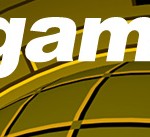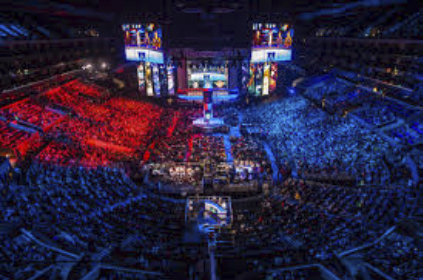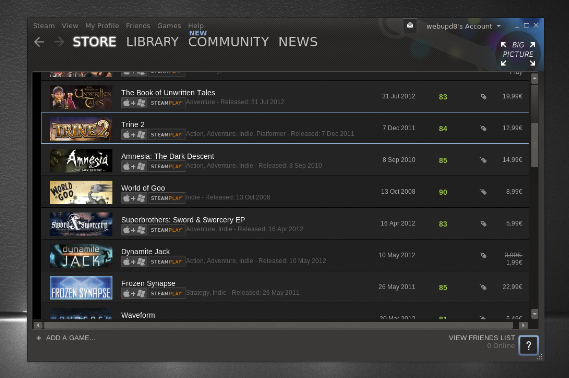Monday, April 20, 2015 at 6:00 pm to 7:45 pm
Stephanie Boluk, Assistant Professor, Pratt Institute
Abstract: This talk will describe the concept of metagaming and its relationship to emerging forms of financialization in and around videogames. Focusing specifically on the labor practices of Valve Corporation and its digital distribution marketplace Steam, I will discuss the experimental management structures of Valve, the architecture of its corporate headquarters, and the practices of players, modders, makers, and spectators who contribute to Steam’s digital economies.
Ashley Cartagena Meghan Dunn Corey Paul
Intro
In her talk “Welcome to Flatland,” Professor Stephanie Boluk recounted 17 seconds that changed both the concept of the video game and the actual gaming practice of the software mega corporation, Valve. From her dynamic play-by-play of the pro-gaming world, we can see that rivalries between nations are strong; narrative and power dynamics are still changing; the importance and influence of playing the game as a hobby and the developing metanarrative of The Game are still emerging. What we’re left wondering is not what happens to Dark Seer after The Black Swan Spectacle, but what happens to the gamer who brought him to life?
By situating those 17 seconds within the context of the gaming enterprise and, subsequently, within the “flat” or “bossless” power structure of its primary arbiter, Valve Corporation, Boluk proved that the game is not an unassuming hobby for children. Over the past twenty years, Valve has evolved from a game developer (credits include Half-Life, Dota, Portal and Left 4 Dead) to the premiere digital distribution company; it now reigns over the gaming community. As gamer and commentator Jeff Dunn said in an article on the history of Valve for GamesRadar+, “Gamers dislike many things and many people, but if there’s one company that they have universally come to revere, it’s Valve.”
In our exploration of “Welcome to Flatland” we discovered that Valve is about so much more than the game. It’s about national pride in the pro-sport area. It’s about the economic ramifications and the social impact of navigating previously uncharted territories and organizational structures. Prior to Boluk’s presentation, we never imagined a video game could have such an expansive reach or incite such diverse discussion.
Perhaps it’s not just a game, after all.
GAMING AS SPORT
Video games are similar to professional sports in their commodification and – particularly in the case of broadcast or streamed games – in their spectator culture, but most average non-gamers would contest the inclusion of gaming as sport. What is it that defines a sport? Is it the physicality? Is it the competitive nature? Maybe it’s the skill?
According to the Oxford English Dictionary, sport (n) is defined as “an activity involving physical exertion and skill in which an individual or team competes against another or others for entertainment.” While the physical element may not be as present in gaming as it is in traditional sports like baseball, basketball, and soccer, a certain degree of dexterity, hand eye coordination, and mental fitness is required for any competitive gamer.
While society debates whether or not to include pro-gaming on the list of what is or isn’t a ‘sport,’ there is a massive population of fans and players that follow and participate in the gaming community. Electronic Sports, or “eSports,” is one of the fastest growing industries in the United States, South Korea, and around the world. Since the late 1990s, domestic and international gamers have traveled to various pro-division events. Capitalizing on these exponential participation rates, Michael Sepso and Sundance DiGiovanni established Major League Gaming in 2002. In 2013, the League of Legends Season 3 World Championships viewership surpassed that of the BCS National Championship and Game 7 of the NBA Finals, and drew twice the audience of the World Series with a whopping 32 million viewers. Regardless of its inclusion in the traditional “sport” category, it’s obvious that gaming is popular, influential, and – as Boluk’s presentation made clear – a spectacle that demonstrates and reimagines our conception of media.
In the commoditized world of pro-gaming, where 17 seconds can make or break a career, one can earn a sizable paycheck as a gamer, but there’s little promise of career longevity or sustainability. We no longer live in a world where parents can say to their children, “There’s no money in playing video games. Go do your science homework!” Major corporate sponsorships and a rapidly growing audience have created a new breed of professional gamer who can see a successful future of million dollar take-homes in tournament prizes and endorsement deals.
Boluk outlined how pervasive gaming and play have become, particularly within the framework of the metagame (the game universe outside the game itself), and its subsequent impact as an economic entity — but what happens when the tide turns in reality and the gamer steps away from his computer?
Like traditional sports, the gamer’s playing career is often short-lived, and there are no established trajectories for life after retirement. While the industry is utilizing the talents of these young gamers, the system is failing to provide a contingency plan for their futures. In an article for CNBC, “Pro gamers story: Get big, burnout, retire young,” Tom DiChristopher stated that most gamers retire by the age of 30. Gamers who gain popularity and financial success find themselves working day and night to maintain their status. Like pro athletes, these young gamers accumulate wealth from tournaments and contracts. According to the Bleacher Report, Sports Illustrated estimated that 78 percent of NFL players and 60 percent of NBA players were facing bankruptcy and serious financial stress within two to five years of retirement. Without proper guidance, young people with wealth often spiral into patterns of destructive behavior. Boluk’s comments remind us that it would be wise for the gaming industry to take initiative and develop policies regarding social responsibility especially as it pertains to young people who populate the majority of their audience.
GAMING AS CULTURE
Over the past two decades, gaming – both as a hobby and as a profession – has given rise to its own world, complete with active online forums, well-attended conferences, and community superstars with massive fan followings. YouTube, for example, plays host to a vibrant subset of the gaming community. Popular personalities like PewDiePie post videos with entertaining play-by-play commentary and critical reviews of new games.
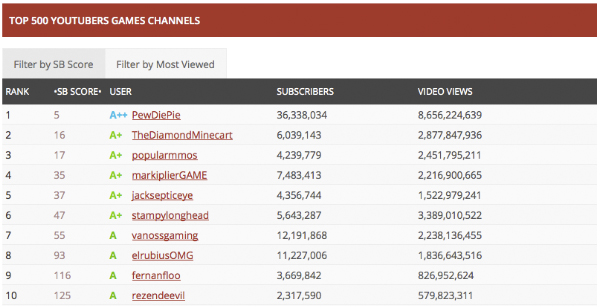
This table from SocialBlade reveals that the top 10 gaming channels have viewershipsranging from 2-36 million. According to Business Insider, gross annual income for top gamers isestimated to range between $500k-$8 million.
Gaming has found solid footing as its own cultural phenomenon, subverting the mainstream to create its own complex, hierarchical society in which gamers are divided and labeled by celebrity status, income, and international conference success. Though gaming as sport has important consequences for young and often vulnerable gamers, and while a handful of gamers (like those in the YouTube community) have claimed some autonomy as independent professionals, what is often overlooked is the impact of the game behind the screen.
In a world that’s so often taken solely for entertainment value, Valve and its CEO and co-founder, Gabe Newell, have experienced an unprecedented meteoric rise to the top. Boluk asserted Valve’s immeasurable reach as a sport, a spectacle, and a metagame on both domestic and international fronts. Yet, as previously mentioned, the questions surrounding ethics and exploitation within the sport are broad and urgent. What about the work environment in the so-called “flatland”?
According to Valve’s handbook, the company defies traditional corporate structure in order to foster an environment where their talented innovators will “flourish.” Valve is flat: “It’s our shorthand way of saying that we don’t have any management, and nobody “reports
to” anybody else. We do have a founder/president, but even he isn’t your manager. This company is yours to steer — toward opportunities and away from risks.” How is it that a company so firmly rooted in a culture of commoditization successfully implemented an anti-hierarchical operating structure? Is it possible that the flatland isn’t quite as flat as the two-dimensional space it occupies on our screen?
One of the most striking takeaways from our research on Valve and on Boluk’s presentation is the impressive community of makers that’s emerged from the proliferation of Half-Life, Dota, and Valve’s other wildly successful software initiatives. The action doesn’t stop when the gamer presses the power button and the screen goes black; the oil’s still burning at the Valve offices where employees have the “freedom” to decide their own projects and are encouraged to strive for productivity, assess their own success, and call the shots on their projects.
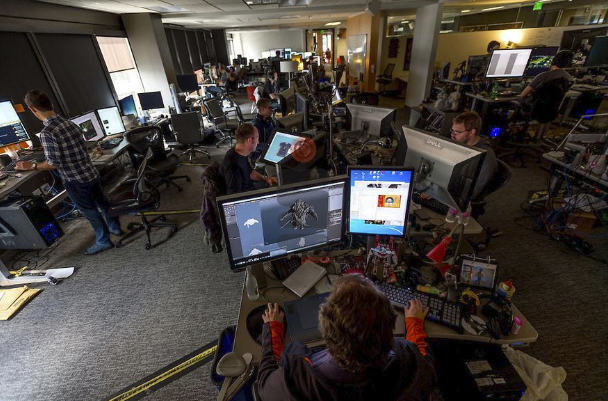
At the Valve offices, all of the desks are mobile and employees are encouraged to move frequently and with purpose. There are no bosses at Valve; everyone is on the same playing field. That flatland goes beyond the office; gamers have as much control over the company’s product as the company.
The notion of a flat company is so counterintuitive to traditional corporate sensibilities that it’s challenging to conceptualize the breadth of Valve’s progressive non-hierarchical management structures and even more difficult to imagine the impact the company has made on the individual employee and the gamer who willingly enters into the virtual social contract.
Sure, Valve’s unconventional practices create much debate fodder; Newell is equally frank about Valve’s aggressive hiring processes as he is about their aggressive firing tactics, as evidenced by the 2013 digital scandal whereby 25 employees were fired in one day, setting the internet forums and tech blogs buzzing. But the very existence of those conversations – the innumerable blog posts, the economic case studies, the transnational alliances that have formed as a direct result of Valve’s practices and products – evidence Valve’s significance not just as a corporation but as a culture maker. Valve isn’t just asking “would you like to play this game”; Valve is asking “would you like to reconsider your role in this community?”
In an increasingly digitized world where we’re so often screaming to be noticed in 140 characters or less, where the connections that link us are more often virtual than they are physical, it’s almost heartening to see such an influential entity looking to empower the individual by defining her own place, her own work, her own community within the corporate structure. However, Valve’s “flatness” in practice may be nothing more than a facade. Boluk pointed out that Valve’s approach to utilizing the skills of their software consumers to create content (as opposed to Valve creating the content themselves) was a successful method to subvert the pitfalls of an increasing piratized digital economy. Like the Valve employees who undoubtedly feel the pressures of increased productivity and the weight of a company’s fate on their shoulders, we wonder if the flatland is actually just a land of exploitation.
GAMING AS ECONOMY
“There is no fun, there’s no work. Whether gamer, employee or billionaire CEO, what remains is productivity,” Boluk said to end her presentation. Valve built its economic structure on the power of productivity, rather than the typical model based on production, believing a flat structure will increase productivity. This flat structure goes beyond the walls of Valve’s company headquarters in Bellevue, WA, and extends to every player that comes across these games.
Steam is an Internet-based digital distribution and management platform developed by Valve. In 2014, it was estimated that 90% of Steam’s content was user-generated. Valve isn’t making games; they are making the infrastructure for gamers to make their own games.
Valve is empowering users to create their own games or add to existing games. The question then becomes, is this play or is this work? Essentially, these players are volunteering their time and intellectual property to Valve, allowing Valve to make a profit from their contributions. Of course some players do make money off the items they create. In a recent Valve blog post, Valve announced that the “total payments made to individuals for the creation of in-game items sold in Team Fortress 2, Dota 2, and Counter-Strike: Global Offensive have passed $57 million. This money was earned by over 1,500 contributors spread out across 75 countries.” The company also acknowledged who they’ve been able to pay and how much they’ve been able to pay has been limited due to how quickly this model has grown. Many who’ve created for Steam have not been paid for their work.
Valve is not a publicly traded company, so they are not required to release financial data, but it’s been estimated that their net worth is in the billions. Newell says that the company, on a per-employee basis, is more profitable than tech giants like Google and Apple. Could this be the way of the future? Will other companies want to adopt this structure of valuing productivity using a flat structure? If so, what will this mean for the consumer, and how could this change our consumer economy? Has Valve blurred the line between work and play?
Valve’s unique approach to economic structure goes beyond the games. When Valve allowed players in Steam to cash out and move their currency from game to game, Valve started to see economic difficulties that a country might encounter. They saw inflation, deflation, and even recessions. This may seem like a virtual world with just “play money,” but think of the insight these games can give to economists. The economies inside these games could allow economists to experiment in ways they would not be able to do in real life. Valve even went so far as to hire Greek economist Yanis Varoufakis to oversee Steam’s economy. He’s now taken what he learned at Valve and is working as the Finance Minister of Greece. Only time will tell if studying the economies in these games will help economists, but it certainly opens a whole new and exciting world with endless potential.
IN CONCLUSION: GAMING AS SOCIETY
Judging just by the number of unanswered questions here, it’s clear that Valve’s practices – whether considered ethical or lacking social responsibility, progressive or exploitative, impressive or terrifying – are making an impact, inspiring important conversations about the definitions, the reach, and the possibilities of media in the 21st century. In the years to come, it will interesting to watch Valve and their “flat” organizational model evolve and, as Newell hopes, proliferate other economic sectors. This increased emphasis on productivity and employee autonomy brings a potential to affect numerous areas of society; from sports to child labor practices, piracy laws to digital copyrights, something as simple as a game could make a huge impact on economy and culture.
Entering into this presentation, we did not anticipate such a lively conversation over video games. Stephanie Boluk proved that, whether for better or for worse, Valve has ushered in a new era of the game in which what you see on your screen is no longer the whole picture. We learned that these are more than video games; there’s a complicated story and an army of employees, enthusiastic hobbyists, and professional gamers behind their creation. This world of the game is a complex one that carries incredible potential for social impact. When you talk about the game, you’re no longer talking about just a game or even a metagame. You’re talking about a society of makers. Welcome to Flatland.
